Modern Celebrations of Easter Are Woefully Inadequate
Medieval Christianity shows us what Easter ought to be.
For quite a long time now, I’ve inhabited a sort of dual world. Much of my lived reality, as one would expect, is the contemporary Western society in which I must directly participate. But interwoven with this is a pre-modern existence that is also intensely real to me, in large part because my long hiatus between undergraduate and graduate studies included a radical experiment in traditional living. Begun in the northern United States and completed in eastern Europe, this phase of my life permanently altered my modes of thought and perception. It might appear that the writing I do for Via Mediaevalis is the fruit of formal scholarship, and though that is certainly true, it is not at all the whole story. Careful research and analysis—literary, linguistic, historical, philosophical—supplies material for the above-ground portion of my work, but below that, largely concealed in the good earth from which Adam was made, is a foundation that dates back to the years when I tried to live like a Christian peasant of the Middle Ages (and not, I emphasize, like an Amish person).
I don’t know anyone who has had an experience quite like mine. Actually, there was one man who, on the material side of things, went even further than I did. A true agrarian philosopher he was, and a fine craftsman too. His spirituality, though, was mostly modern, whereas mine was more medieval by the day. I admired his work, and learned much from him, and valued our long-distance interactions; when he died prematurely, I felt strangely alone and defeated. His death still saddens me in a way that most deaths do not. Peter Vido was his name, and he fought heroically against the postmodern technological abyss. It was my good fortune that he had a large barn, and therefore did not need to master the art of making haystacks—which he surely would have mastered, had he put his mind to it. I had no large barn, and therefore did need the art of making haystacks. Since I couldn’t learn it from him, I had to go to eastern Europe, where the villagers still make them in much the same way as medieval serfs did. I ended up learning more about the mysteries of human life—and about the fragility of human traditions—than about haystacks.
So now here I am, dwelling continually within a mighty host of memories: emotions, images, aromas, bodily movements, tactile sensations from a time when the deep logic of daily life was soil, grass, wool, milk, carpentry, firewood, rainfall, and the all-surpassing poetry of an ancient and medieval and immortal liturgy. Yet I am, at the same moment, immersed in the bewildering machine of modern commerce, immersed in the intellectual whirlwind of modern publishing, immersed in the vast complexity of a modern university. I see all this before me, above me, all around me: a Hobbesian leviathan made of plastic, microchips, stock markets, and computer code. I see also the faces of my students—young adults now, no longer children—and wonder at their beauty, and their unspoken questions, and their sorrows. And in those faces I see myself, for I was once in their place; I remember well what a clever fool I was then, lost in a world I thought I knew, and utterly unaware that there is and always will be more magic in the dewy edge of a scythe blade than in anything that comes out of Silicon Valley.
Living in this sort of dual world—radically old-fashioned on the one hand, thoroughly modern on the other—helps you to notice things. One thing that I noticed, and which struck me as very important even if no one around me seemed to care, was that post-medieval western Christianity somehow lost track of Easter. Sure, the feast itself is still celebrated, and Holy Week is still taken seriously in some places, but Easter is a noonday shadow of its former self.
Christmas now dominates the cultural cycle of religious festivity, especially since its secularized, commercialized, banalized counterpart is exceedingly prominent. I have nothing against Christmas (the Christian version, I mean), but it almost seems that modern man can only stomach one joyful season per year—when the incomparable Day arrives, and we are invited to relive the Resurrection of the God-Man, the festive spirit can barely drag itself through Easter Sunday. By Easter Wednesday, it’s time to sober up and get back to work.
Words can scarcely express how contrary this is to the liturgical and sociocultural reality of pre-modern Easter. In the Middle Ages, Easter was not one day. It was not three days. It was not one week. It was fifty days, from Easter to Pentecost, which together form an “image of our eternal happiness. They are days that are devoted exclusively to joy”—these words, almost painful to the pragmatic, embittered, joyless ears of modernity, are from the great nineteenth-century monk and scholar Dom Prosper Guéranger,1 a man who entered deeply into the spirit of medieval Christianity. Subsequent quotations, unless otherwise indicated, are also his.
For a time I attended a church, nominally “traditional,” in which the celebration of Easter began in the evening of Holy Saturday and was mostly finished by the following morning; the priest, in fact, explained to us that Easter was basically the Vigil, and not much would be happening on Easter Sunday. Alas, and woe! Such words have no place in historical Christianity, and in my spiritual life they were about as welcome as a bucketful of boiling pitch—for this is the Day that Guéranger calls “the Feast of Feasts,” “the Solemnity of Solemnities,” “the Day of Joy,” “the holiest of days” to which “the whole year looks forward in expectation.” If the whole year looks forward to the sort of Easter Sunday that I have reluctantly grown accustomed to, then it’s a dismal year indeed.
The Council of Nicaea, in the fourth century, decreed that all members of the Church should pray while standing, not kneeling, during the entire fifty days of Easter. This practice, pertaining mostly to public and liturgical prayer, survived better in the East than in the West, but even in the West there were vestiges of it long after the medieval period. Nowadays it’s basically ignored or forgotten, and those who make the Divine Mercy novena will probably be kneeling on the Paschal Feast itself, and on every day of the Paschal Week, as they recite the chaplet.
I mean no offense to those who enjoy the Divine Mercy devotion, but it must be recognized that Christians of the early and medieval Church would be confused and suspicious, maybe even aghast and scandalized, to hear people praying “for the sake of His sorrowful Passion…” on Easter Sunday. Dom Guéranger again: “The first week [of Easter], which is more expressly devoted to celebrating our Lord’s Resurrection, is kept up as one continued Feast.” And Hilary of Poitiers, a saint and bishop of the fourth century, wrote that during all seven weeks of the Easter season, “no one should kneel or mar by fasting the spiritual joy of this long Feast.” So serious was the traditional Church about actually celebrating and rejoicing that any fast, when done for penitential reasons, was prohibited (not just discouraged) from Easter Sunday to Pentecost. This practice has little relevance nowadays, since penitential fasting is rare under any circumstances, but to dwell repeatedly upon “His sorrowful Passion” is like a psychological fast from “the spirit of Gladness, which is the very essence of Easter.”
The devotional and liturgical practices of ancient and medieval Christianity were intended to bring the people “to Easter as to a land where there is nothing but gladness, light, life, joy, calm, and the sweet hope of Immortality.” We’ve come a long way from that, I’d say. Many of us were probably back at work on Easter Monday. I certainly was—at a public university, it’s like any other Monday, and my first class begins at 9 am. During the Patristic era and the Early Middle Ages, servile labor was forbidden for the entire first week of the Easter Season. Imposing a long period of holy leisure ensured, as a sixth-century Church council explained, that everyone could
come together to sing the Easter Hymns, and assist at the daily Sacrifice, and praise our Creator and Redeemer in the evening, morning, and mid-day.
I say again: we’ve come a long way from medieval Easter.
The Christian ideal has not been tried and found wanting. It has been found difficult; and left untried.
—G. K. Chesterton
No one says that joy is easy. Buoyancy of spirit, domestic warmth, communal celebrations, mirthful dances, songs of gladness—none of this is easy to sustain for one week, much less seven. Even in the Middle Ages, the joy of Easter had to be protected and encouraged by ecclesiastical authorities. But Christianity seems to have fallen into the trap to which Chesterton alludes: we have discovered that Paschal rejoicing is very difficult, and now it is largely untried. It goes without saying that this approach—though understandable given the stress, malaise, and isolation that are structural features of postmodern life—will make the situation worse, not better.
In Shakespeare’s 2 Henry VI, the Duchess of Gloucester’s lamentation is all too reminiscent of the despairing nihilism that permeates secular postmodernity.
Ah, Gloucester, teach me to forget myself!…
Ah, Humphrey, can I bear this shameful yoke?
Trowest thou that e’er I’ll look upon the world
Or count them happy that enjoys the sun?
No, dark shall be my light, and night my day….
Art thou gone too? All comfort go with thee,
For none abides with me. My joy is death—
Death, at whose name I oft have been afeard,
Because I wished this world’s eternity.
What I find especially thought-provoking is that in this scene, the duchess is doing public penance. I think it is true that, in a certain sense, the modern psyche inhabits a perpetual Lent. We labor under the entirety of life as our pre-modern ancestors labored under the sorrows and deprivations of a penitential season. This is a profoundly unhealthy way to live. And it most assuredly is not a traditional Christian way to live. Though there is no single remedy for this condition, the principal remedy is right in front of us: it’s called Easter, and it lasts until Pentecost, “and all these fifty days,” as St. Ambrose said, “are like so many Sundays.”
The emphasis, here and elsewhere, is mine.


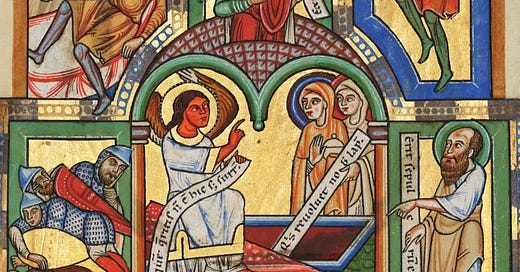


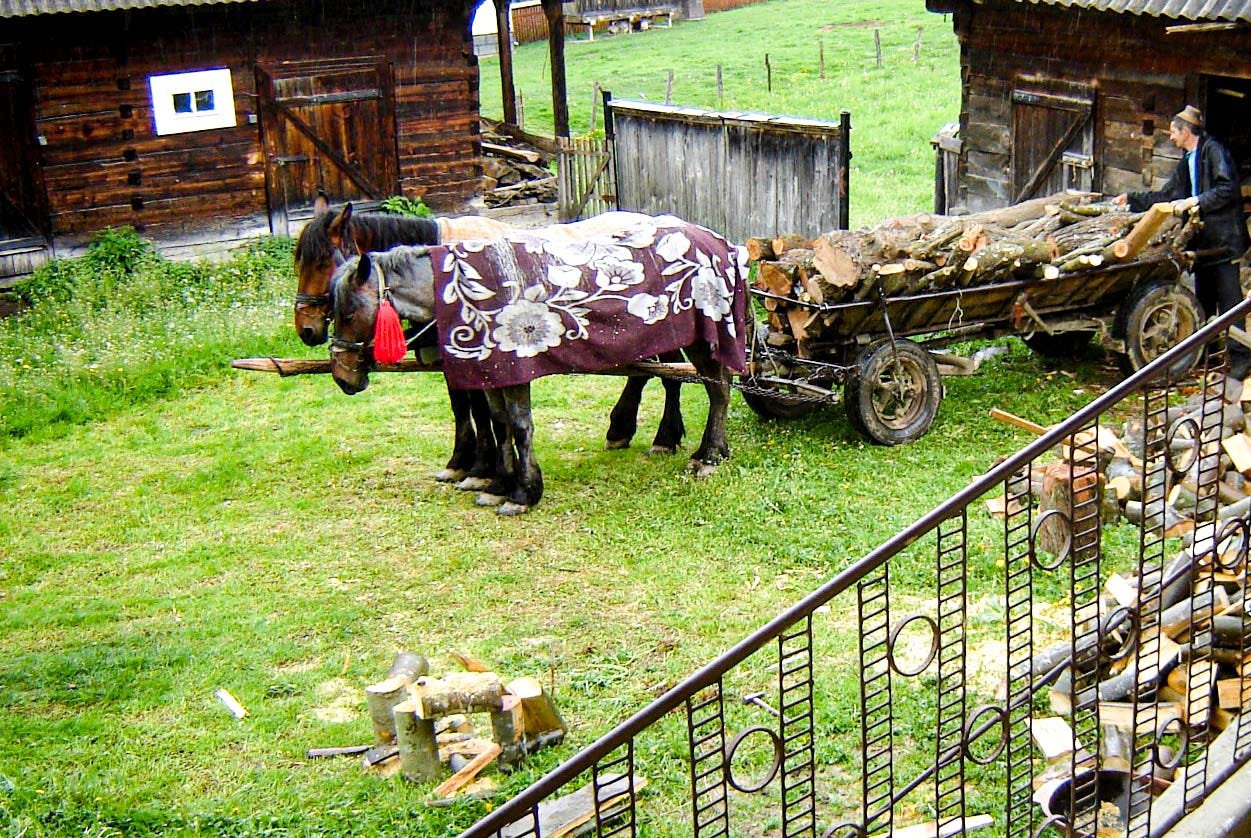
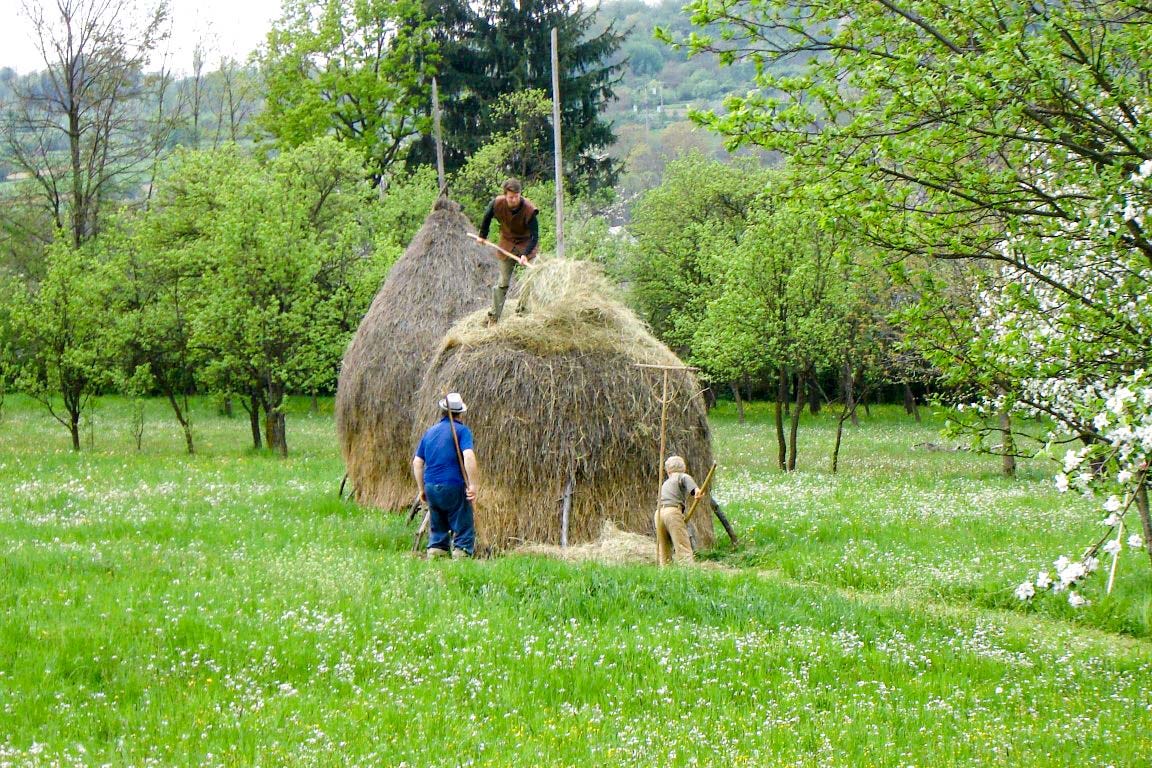
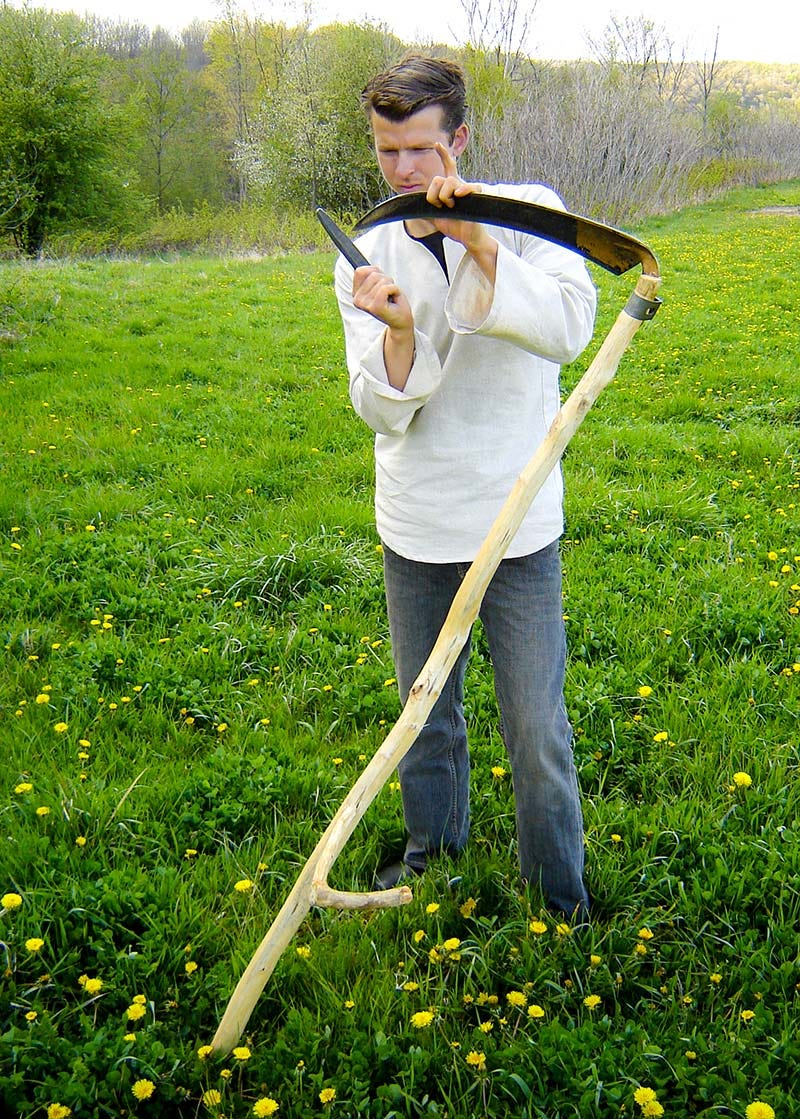

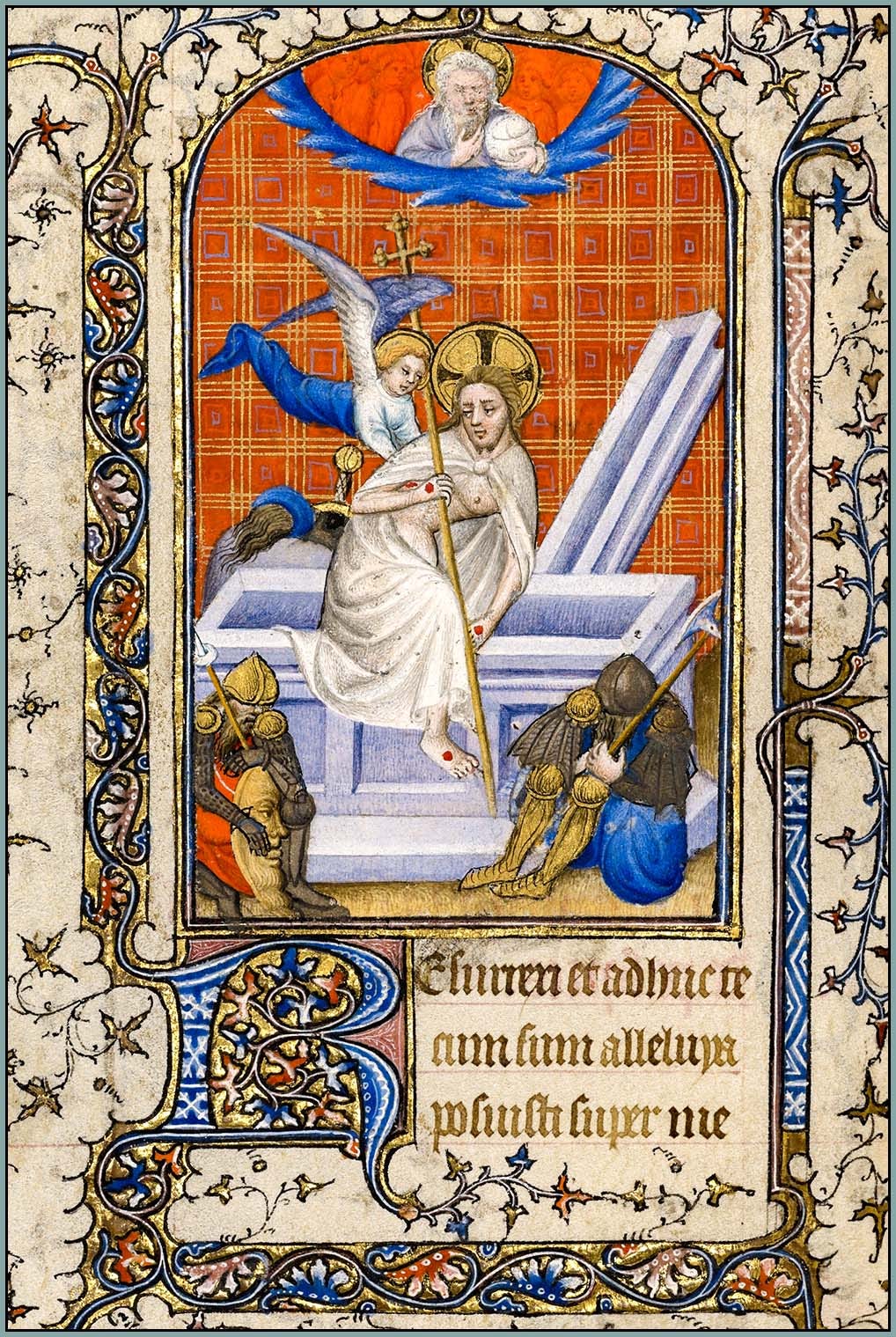

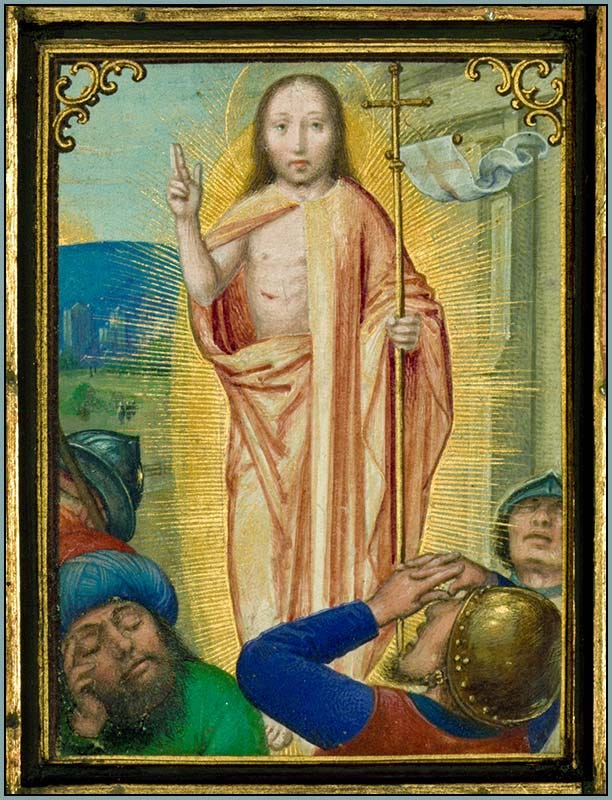

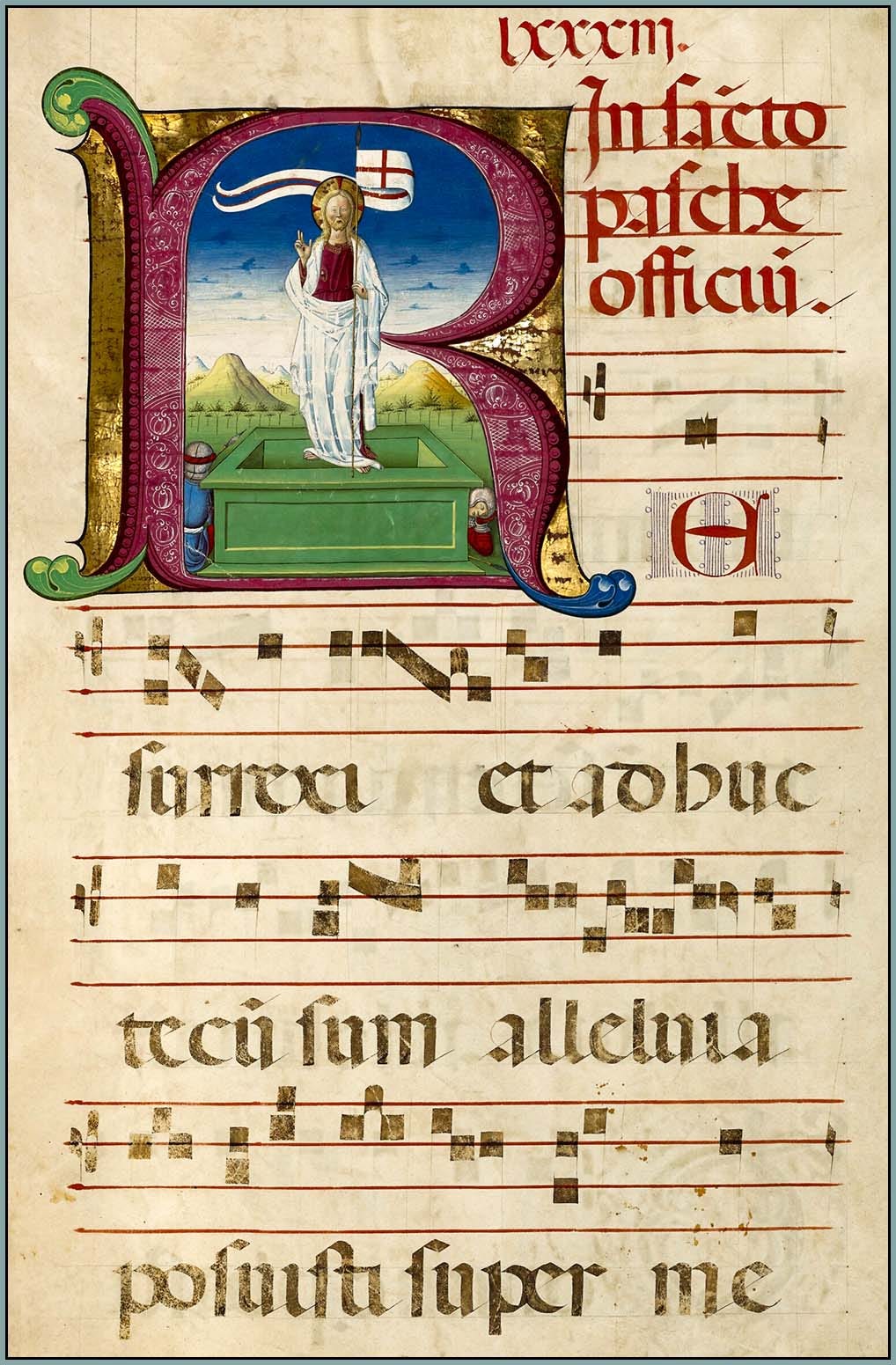
Reading this, I feel that peculiar ache which comes when the soul recognizes a home it has not yet fully entered. For what you describe is not merely a critique of modernity’s amnesia, but an invocation of something far deeper—a summons to remember that Christianity was once a living current, not a cultural relic; a breath caught up in fields of dew, woodsmoke, and bells, not reduced to slogans and scheduling conflicts.
It is no small thing you name here: the loss of Easter is not the loss of a season, but the slow forgetting of our true citizenship. For in the old world, Easter was not an interlude; it was the atmosphere itself—the air the soul breathed for fifty bright days. To recover it would not merely be to correct a liturgical oversight; it would be to reawaken the buried knowledge that the Resurrection was not an event but a world, a world we were meant to inhabit even now.
This, too, touches on the marrow of incarnational mysticism, which is my main theme in Desert and Fire: that the eternal breaks not in some disembodied future, but into bread, into firewood, into the worn handle of a scythe glinting in the dawn. In those years when you lived as a peasant might have lived, you did more than reject modernity—you slipped through a tear in the veil and glimpsed what the saints and mystics have always known: that God’s glory is not an ornament laid atop the world but the very grain of its being.
It is a strange and terrible irony that we, who pride ourselves on having conquered time, have forgotten how to live in it. We rush past Easter like men stumbling over buried treasure. We kneel out of habit, not joy. We mourn where we ought to dance. And somewhere beneath the plastic surface of things, the stones themselves cry out.
But still, even now, a remnant remembers. In the glint of sunlight on old wood, in the shy gladness of students who have not yet learned to disbelieve in wonder, in the fierce, stubborn clinging to the ancient songs sung not for effect but because they are true—there, the breath of Easter lingers. And if one listens closely, if one dares to live as though the Resurrection were the deepest fact and not a pious metaphor, one might yet hear the ancient music swelling under the dead noise of the age.
You have heard it, and borne witness to it here. And in doing so, you remind us that the task is not merely to remember Easter, but to live it—to become, even in this late and weary hour, inhabitants of that hidden world where every day is a Sunday, and every scythe-blade gleams with the dew of a death already conquered.
You point to the larger question about the Divine Mercy devotion: the cheerfulness with which the modern church just barges into the liturgical year with its bright ideas. A perpetual Lent indeed. It means that the most devoted Catholics are continually mournful and even depressed. The others, the weak reeds so to speak, are just oblivious -- they have neither Lent nor Easter. No wonder they love sports so much! At least they can celebrate!